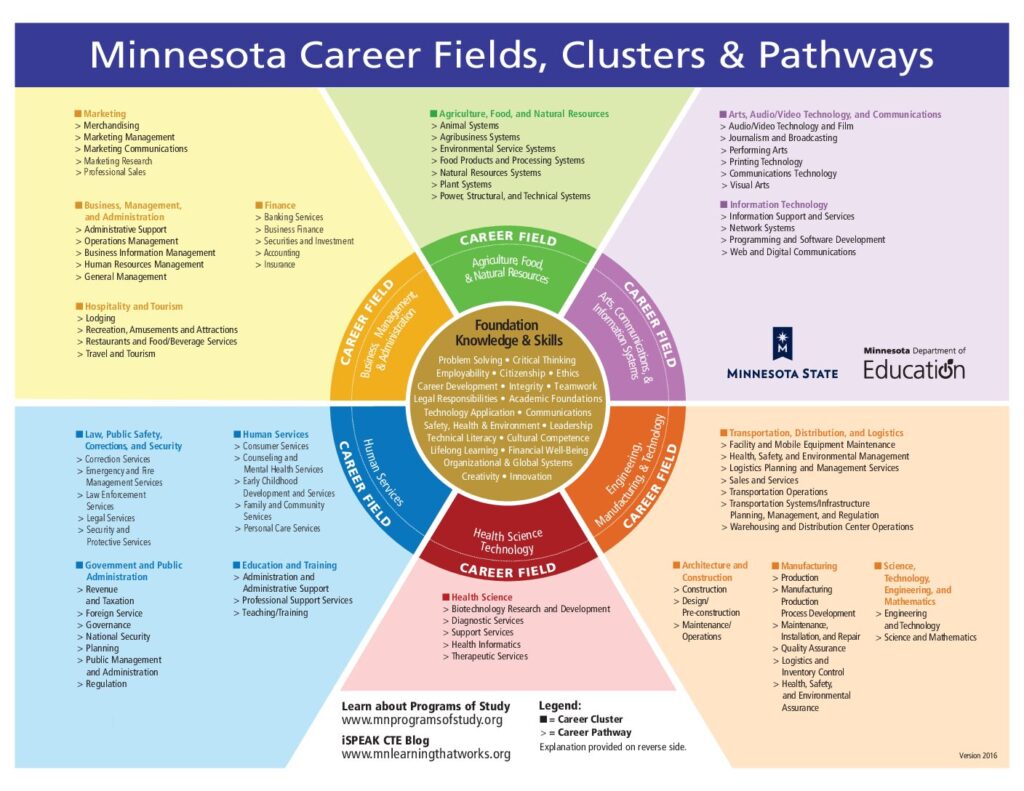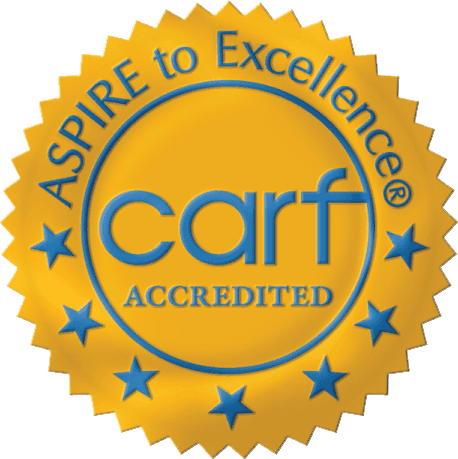
In Minnesota, like in many other states, career fields, clusters, and pathways provide a framework for organizing and understanding the wide variety of careers available. These frameworks can help students, job seekers, and educators explore different career options and make informed decisions about their future. Let’s take a closer look at these concepts and how they relate to Minnesota’s career landscape.
Career Fields: Career fields are broad categories that group together similar types of occupations based on the work they involve. In Minnesota, the Department of Employment and Economic Development (DEED) recognizes 16 career fields, including Agriculture, Food & Natural Resources, Business Management & Administration, Health Science, Information Technology, and more. Each career field encompasses a range of occupations that require different skills and levels of education.
Career Clusters: Career clusters are smaller groupings within career fields that bring together related occupations. There are 17 career clusters identified by the National Association of State Directors of Career Technical Education Consortium (NASDCTEc), which align with the 16 career fields recognized by DEED. For example, the Health Science career field includes the Health Science cluster, which includes occupations such as Nurse, Physician, and Medical Assistant.
Career Pathways: Career pathways are a series of connected education and training programs, work experiences, and support services that enable individuals to secure employment in a specific industry or occupational sector. Pathways help individuals understand the steps needed to enter and advance in their chosen career field. In Minnesota, career pathways are aligned with the state’s career fields and clusters, providing a clear roadmap for career development.
Why Are These Frameworks Important?
Conclusion Understanding Minnesota’s career fields, clusters, and pathways can help individuals make informed decisions about their education and career. By exploring the various options available, individuals can find a career path that aligns with their interests, skills, and goals, ultimately leading to a fulfilling and successful career.


L&S Consulting does not discriminate based on race, creed, religion, sex, sexual orientation, color, national origin, familial status, age, disability, marital status, veteran status or status with regard to public assistance.
For a copy of the Client Handbook, Please send an email to info@lsconsulting.com

CARF Accreditation and VRS Requirements
To provide quality services to our clients, our organization is accredited by CARF (Commission on Accreditation of Rehabilitation Facilities). This accreditation ensures that we meet high standards for employment and community services, focusing on personalized, effective, and measurable support to help clients achieve meaningful employment and community integration.
Reaccreditation is required every three years to ensure continuous improvement and compliance with CARF standards, demonstrating our ongoing commitment to excellence and client-centered outcomes.
For a copy of the Client Handbook or to view our documents in another language, Please send an email to info@lsconsulting.com